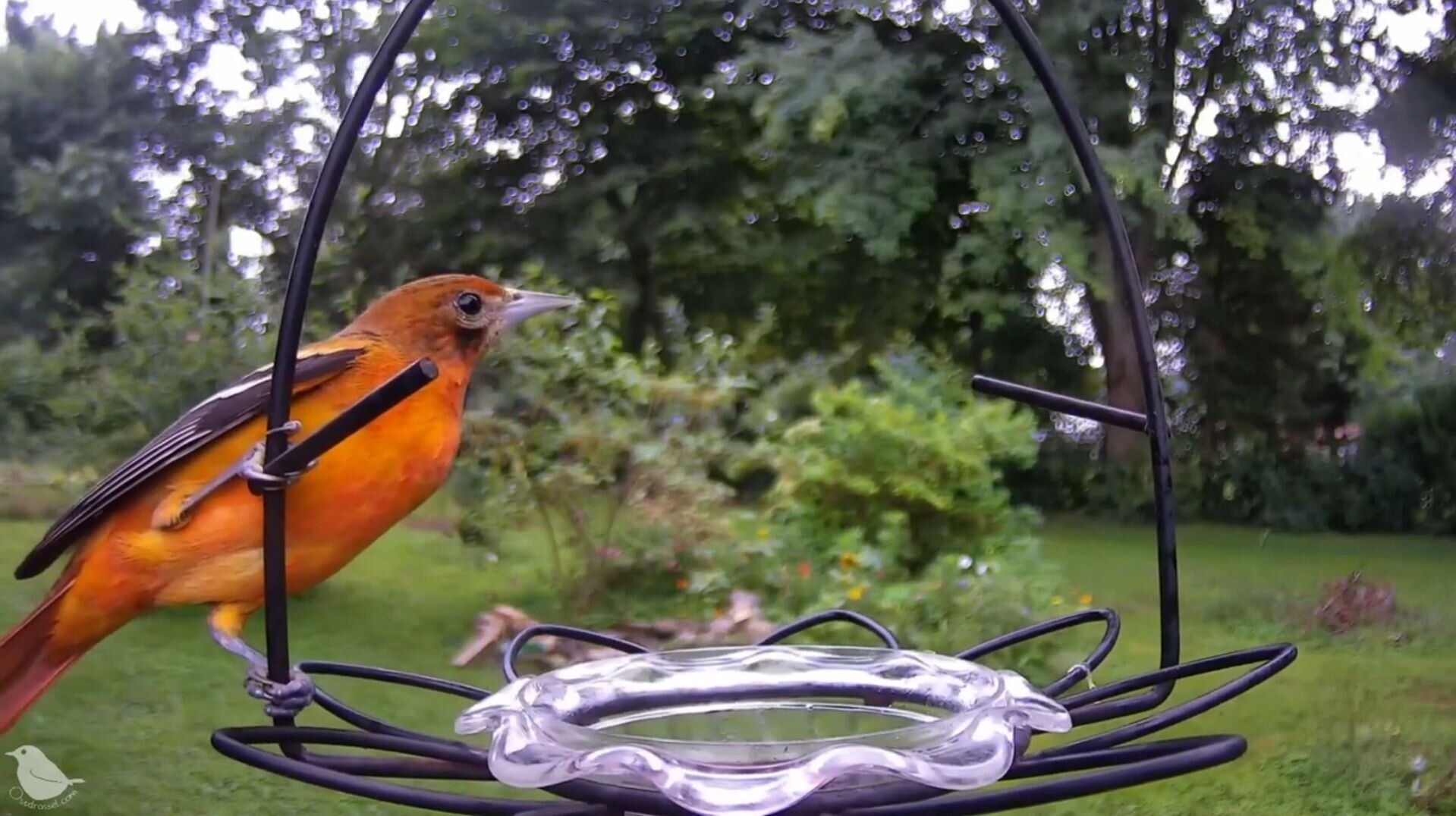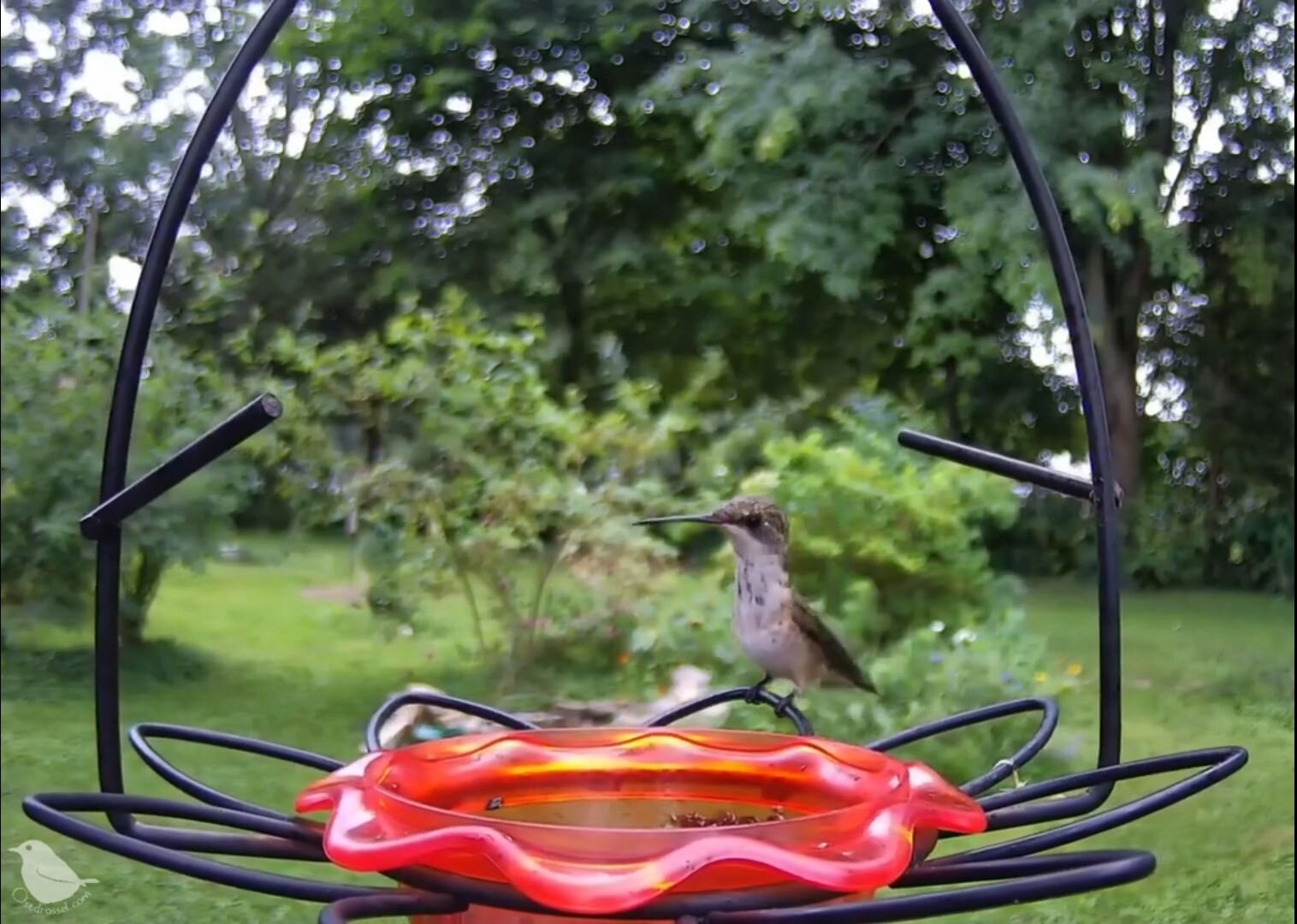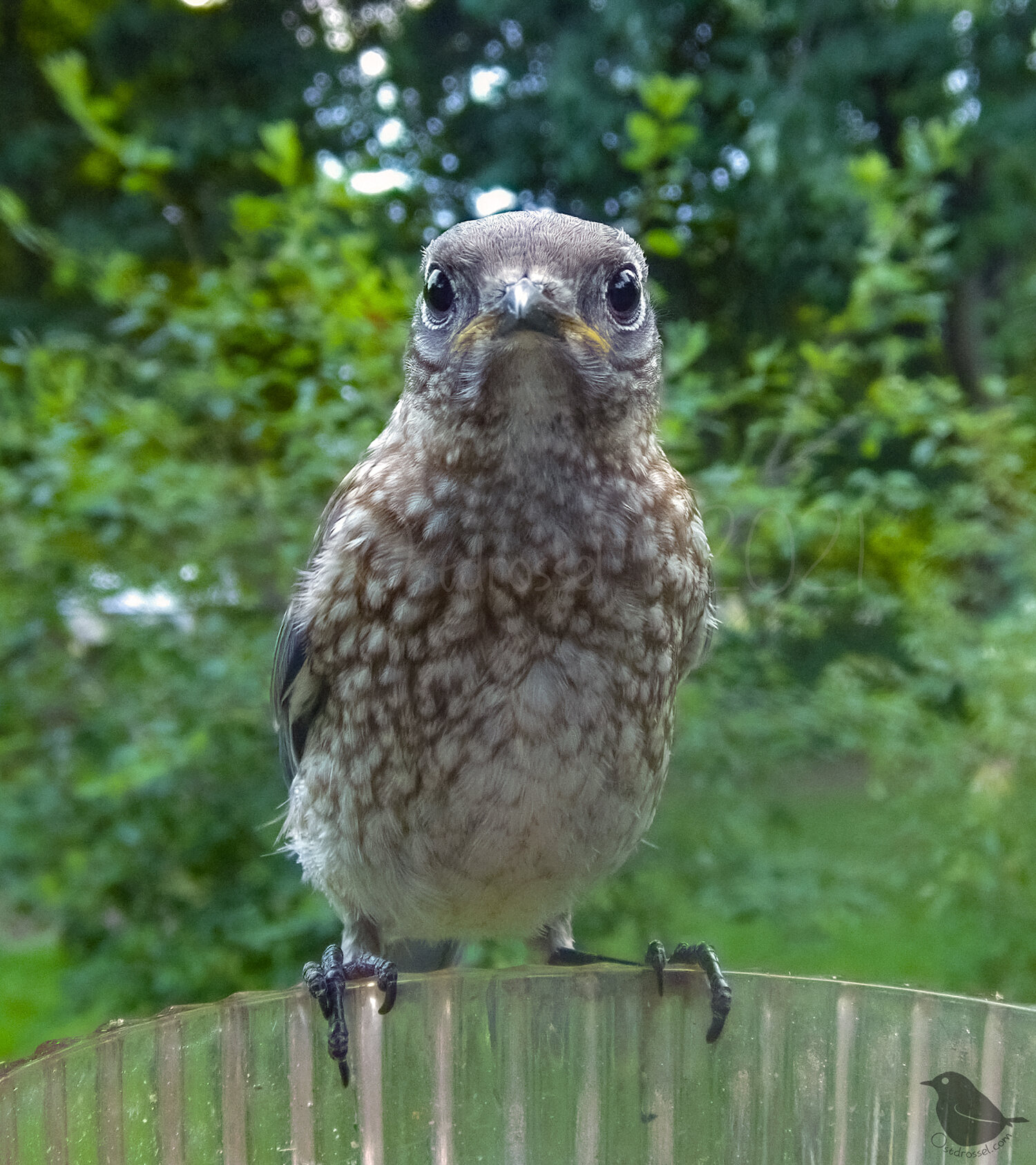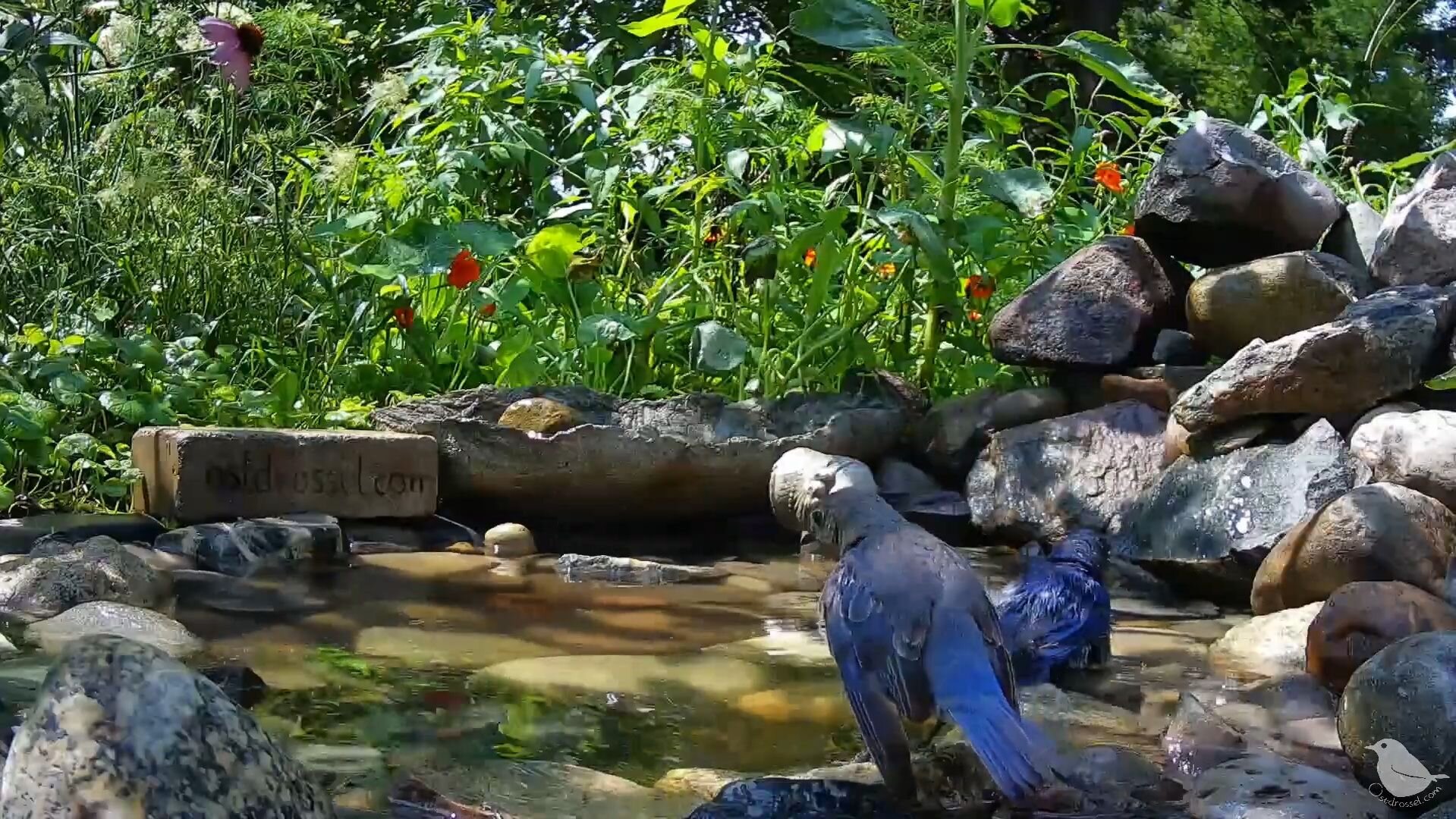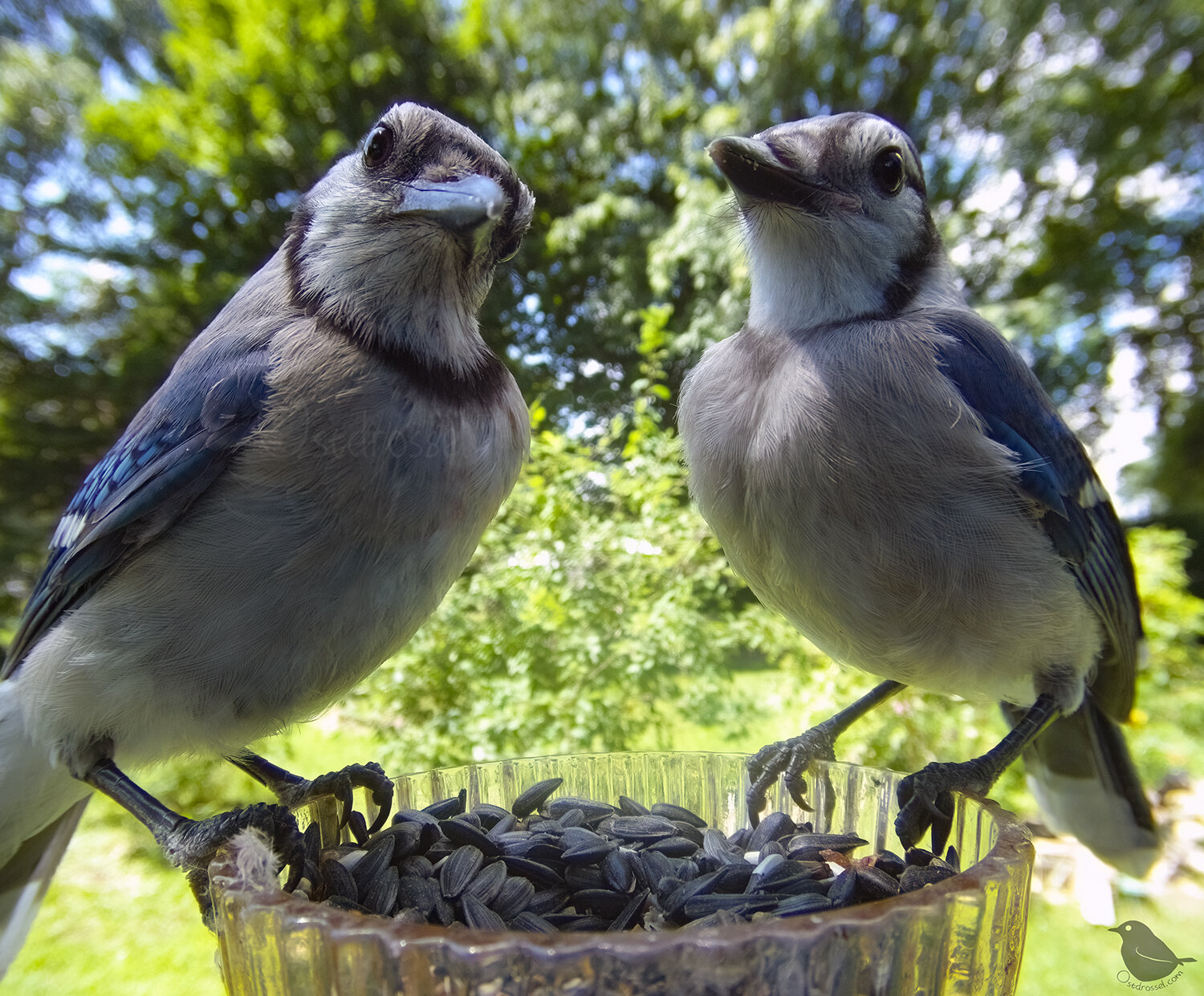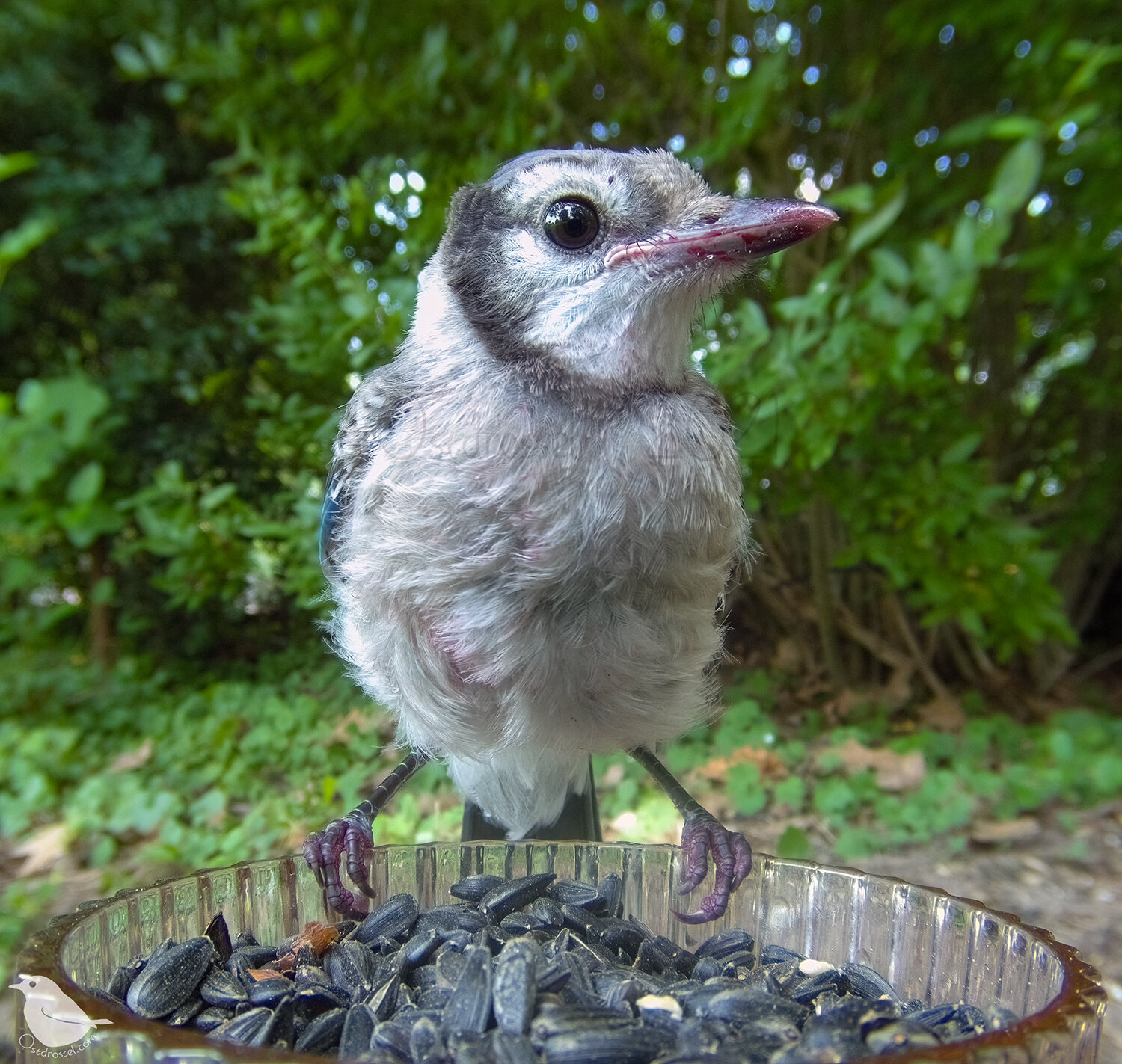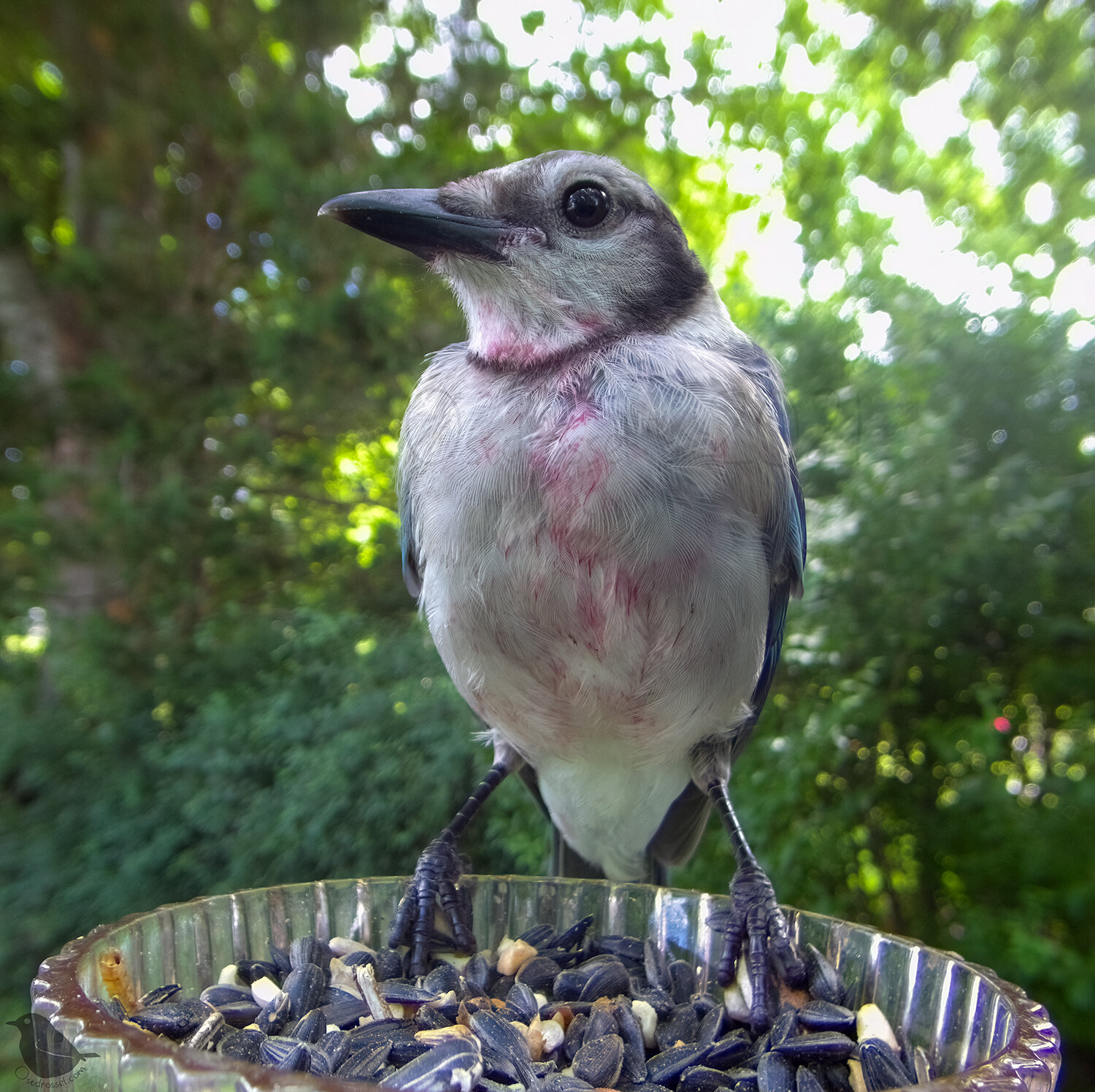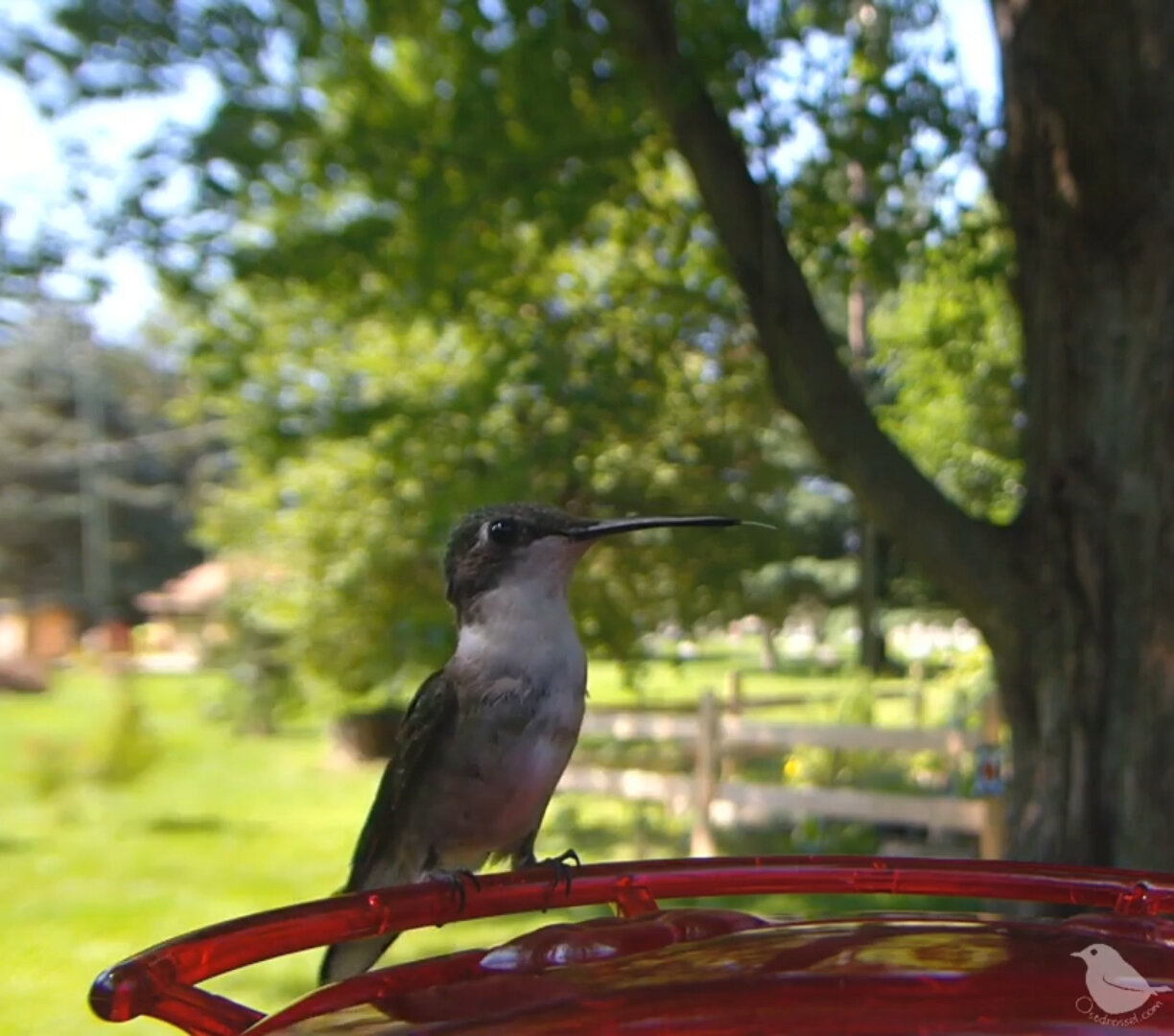Everybody's molting,
and it’s quite the sight to behold. For smaller birds like Chickadees, Titmice and Bluebirds, the molting is also a good ID marker for the adults. The babies usually look all preppy and brandnew at the end of the season. Blue Jays and Grackles look most dramatic. Here we have: young Cowbird, Blue Jay, House Finch, Blue Jay, young Blue Jay and Grack. They all appreciate quality food and water during this time. The feathers will grow back and they will look like new soon again.
It is always great
to get a new wave of summer guests when the season comes to an end. Orioles are starting to be on the move, and some from farther north are passing through on their way to their winter quarters. This one came very early today, and it looks very unusual with this really intense vibrancy. It looks like it could be a young male, with some of the darker head and neck markings coming through too. I hope it sticks around for a bit, I also prepped a photo cam with jelly today.
Video: Yesterday at some point,
power came back for a little bit, but with lower voltage. We were hopeful, so I put the cameras back out, and they recorded for a little bit. Now this morning, we are back to no power and the generator. I am glad I decided early to use the generator because I had deadlines and did not want to risk damaging the computer or losing data. Anyways, in between that tiny timeframe, this adorable young hummer came to the grape jelly. I lowered the volume in this video to make the generator noise less noisy but you can still hear the tiny chirp. Hopefully, tomorrow will be a better day power-wise. I am beginning to tire of this.
The backyard
is currently mostly occupied by these guys - young Blue Jays. They are loud, they are entertaining, they are adorable, all the while learning how to get around in life. The adults often mostly look alike except for the “necklace” part but the babies have very different looks, and I always love the variety. One of my favorite ones showed up the other day. Each year, there is at least one like it, and for some reason I find them extra cute. They have comparatively dark markings around the face, reminding me of a cartoon bandit. Others barely show any markings.
Over the course of the year,
I move my cameras around the yard to make use of more foliage and avoid direct sunshine into the lens. Sometimes the shadows can create magical little moments, like when this Starling sat there, waiting for the bowl to be refilled.
Dr. Clara and Mandrake
have not returned to the nestbox recently, but they are still hanging around, and with them are usually two to three young ones. This Bluebird season has been a bit less exciting than in previous years, which kind of fits the whole birdwatching summer this year, but I hope they stick around and will be frequent visitors in fall and winter, which is what they usually do.
Now is a good time
to learn more about sexual dimorphism in birds, the differences in the appearance of male and female birds. Often, the young ones look very similar to the females, which helps them staying safe / less visible when there is danger. Teenage birds can be hard to tell apart. Here is a Red-winged Blackbird, looking very much like the female, but if you look closely, you can see some reddish tones shooting in on the shoulders in the second photo, beginnings of the famous red epaulets of the males.
Common Grackles
are seemingly not everybody’s favorite due to their big appetite and sometimes overwhelming presence. I personally find them fascinating and love watching their interactions and behavior. And as with basically all animals, the young ones are particularly fun to watch. Some of the adults are still molting heavily while others are as shiny and gorgeous as in spring.
Video: Dr. Clara at the pool
The camera was struggling a bit because of the constantly moving leaf shadows but I thought this scene was too cute not to share. Dr. Clara is behaving like me when I first go to take a dip 😆 Also, I just love their slow wing display. Bluebirds are magical.
Since there are plenty of them around
right now, here is another gallery of the blue screemers. Young and old, molting and not, individuals or groups. It feels like they are watching when I come out because as soon as I step away from a refill, they will be on the feeder. The babies are just so wonderfully goofy at that young age.
(Top row: adults, middle row: two young, a parent on the left and a baby on the right in the middle, baby, bottom row: all young ones (the photo in the middle captured Blue Jay spirit perfectly)
European Starlings
change their appearance quite a bit throughout the year and their life. The juveniles are starting to lose their brown baby feathers and growing into the speckled look that is their typical winter coat. The adults are losing their glossy breeding plumage, the yellow beaks of the males are turning dark again and their legs and feet become less vibrantly red. I always like this patchwork stage on them.
I am also seeing
more young MoDos now. And they all seem to have the squatter gene right from the start of their life! 😆😜
While summer is slowly
coming to an end, and I have not seen Grosbeaks for a couple of days now, I still have quite a few Baltimore Orioles around. It is mostly females and youngsters now, but there also still is the occasional male. They all either grow their first set of proper feathers or molt to get ready for migration. And they have to share the grape jelly with Robins, Woodpeckers and House Finches, too.
Along with the Titmice,
there have also been more Chickadees recently. They all raised babies and are starting to come back to the backyard again to delight with their appearance and songs. I always feel a little bad for them because they usually come to the camera when the bowl is empty. (Because then no other bird occupies it.) Nevertheless I am sure they still get their fill as I see them flitting around between feeders and trees a lot.
A MoDough.
Mourning Doves can be very dominating at the feeders, lifting their wings to shoo others away, pecking rivals away, or doing this. Just squatting down to digest and snack some more. I hope your Saturday is filled with lots of naps and good food as well.
Every evening,
when the sun starts going down and things calm down a bit, a Cardinal party starts. I have counted up to six adult individuals and several babies in the last few weeks. They are still pretty camera shy, but now that feeder traffic is getting a bit more normal, this beautiful female came to the bowl yesterday. It is my quest each year around this time to capture photos or video of the most adorable babies but so far I have not been very lucky.
Blue Jay babies
are all over the backyard right now, vocally as well as in numbers. I always find it interesting to see how individual birds differ in regards to markings or even age. In this little selection, there are some older ones as well as one that looks like it just stumbled out of the nest (the first one). As you can see, they also love mulberries.
The Red-winged Blackbird,
always ready to pop an artery 😆 There have been plenty of them this year, and they also seem to have had a really good bredding season. I see lots of babies all around the yard, and they also love the pond. Some of them are molting, but in their heads, they still look as impressive and gorgeous as ever 😊
This sweet visitor
finally was comfy enough to sit while drinking the nectar. I make my own hummingbird nectar, and recommend you to do it too. It is easy, cheap and healthier for the birds than the store-bought stuff with dyes and preservatives. Use 1 part granulated white cane sugar and 4 parts water. Mix until dissolved and chill. You can boil the water to help dissolving. Don't use chlorinated water. This mix will hold up for a couple of days in the fridge.







